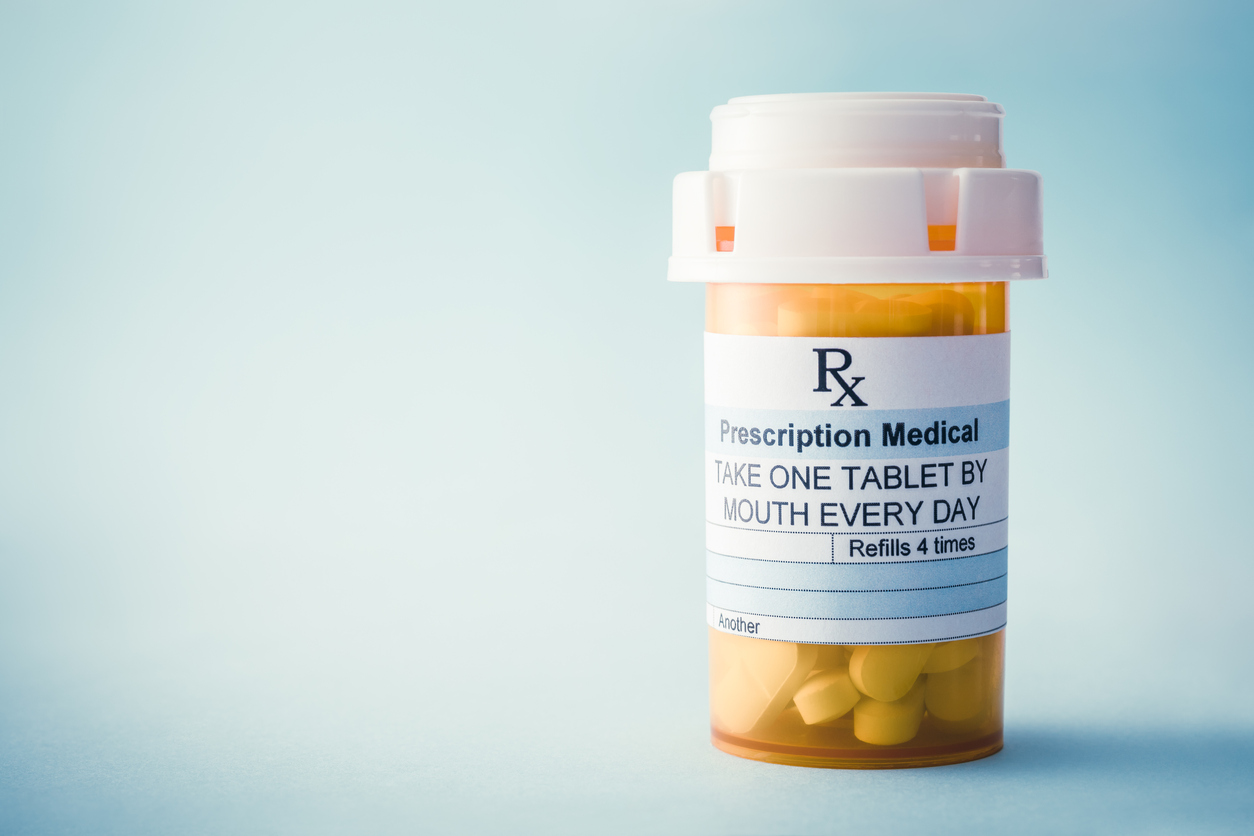In the traditional dispensing process, inefficiencies run rampant. Miscommunications between the healthcare provider, health insurance, and compounding pharmacy can lead to delays. Extra trips to the pharmacy and long waits can hinder patient care and create a patient safety risk, especially if your clients aren’t properly educated about side effects, drug interactions, and dosage instructions.
Imagine how much easier the entire experience would be if you could move the prescription filling process in-house and provide point-of-care medication dispensing. Fortunately, you can in fact do just that. Here’s everything you need to know.
Introduction to the Prescription Filling Process
Traditionally, a patient will visit their healthcare provider and receive written prescriptions or electronic prescriptions. They will then have to travel to their local pharmacy, hand the prescription drug information over to the pharmacy staff, and hope the order gets filled without delay.
More often than not, however, issues with verifying insurance plans or fulfillment delays arise. This means they will have to wait around for hours or even come back on a different day to get their meds.
External pharmacy dispensing creates a disconnect that could make it hard for your patients to receive the correct medication in a timely manner. Once the patient leaves with the paper prescription or heads off to wait for the pharmacy to receive the electronic medication order, their care journey is no longer in your hands.
In-office dispensing shifts the responsibility of filling prescription orders to your practice. More importantly, you and your team can play a direct role in mediation safety, verifying the patient’s insurance and ensuring that the prescription label accurately relays all important prescription information.
Benefits of In-Office Dispensing for Prescription Filling
Physician dispensing accelerates the prescription filling process and provides tremendous advantages to all involved. Here’s a look at how an in-house prescription filling process benefits patients and your practice.
Benefits For Practices
Implementing in-office dispensing reduces the administrative burden on your staff. They won’t have to field calls from pharmacies or manage requests to verify the number of refills you’ve ordered. Instead, they can handle everything internally and provide a great patient experience.
In-house dispensing also creates a valuable revenue stream for your practice. You can generate cash flow by filling prescriptions and filing claims with payers. Over time, this additional income can support practice growth or fund new initiatives.
Benefits For Patients
One of the main benefits of in-office dispensing is that it can expedite the process of filling a prescription. Patients tend to drag their feet when it comes time to pick up a prescription, especially if the pharmacy technician can’t have the order ready the same day or the insurance company won’t approve the drug right away.
According to a study on prescription lag time, the average lag time for picking up automatic prescription refills was about nine days. Patients took around 3.5 days, on average, to pick up manually refilled prescription medications. In-house dispensing reduces or eliminates that lag, helping your clients stick to their treatment regimens.
You’ll also have a chance to speak with patients about medication safety. You can discuss how a new prescription may interact with their original prescription or over-the-counter supplements. Use this opportunity to reduce the risk of dangerous drug interactions and promote better adherence.
Process of Setting Up an Efficient In-Office Dispensing System
Implementing an in-office dispensing system involves several key steps to ensure efficiency and compliance. For instance, you’ll need to:
- Learn Regulatory Requirements: Research state and federal rules to ensure compliance
- Choose the Right Dispensing Partner: You need a reputable dispenser that will provide the necessary hardware and inventory
- Integrate Software Solutions: Team up with a software provider that can simplify inventory management and recordkeeping
- Establish Inventory Management Practices: Create sound policies that guide your team on what they need to do and how
- Train Your Staff: Educate your team so they are confident in their expanded roles
There are a few concepts you need to keep in mind when implementing these steps. Maintaining compliance, promoting patient safety, and making your team feel supported must be top priorities.
Legal and Compliance Considerations for Physician Dispensing
Adhering to legal and regulatory requirements is critical to in-office dispensing. At the federal level, the Drug Enforcement Administration (DEA) and the Food and Drug Administration (FDA) oversee medication dispensing practices. Compliance involves maintaining proper registration, secure medication storage, and accurate records of all prescriptions.
You’ll also need to familiarize yourself with state-specific regulations. Your jurisdiction may have unique guidelines on the types of medications you can be dispensed and how you have to report these transactions. Consult your state board of pharmacy and medical board to understand and comply with these requirements.
Use software to assist with medication dispensing and recordkeeping requirements. Solutions like Proficient Rx will make collecting and organizing these documents much easier.
Frequently Asked Questions About the Prescription Filling Process
Here’s a look at some FAQs that will help shed light on the prescription filling process.
How Long Does the Traditional Prescription Filling Process Take?
The average time to fill prescriptions under the traditional pharmacy model can vary greatly based on factors like accessibility and the type of medications you are prescribing. One study found that the mean time to fill antibiotic prescriptions was 1.7 days and the mean time to fill antidiabetic and antihypertensive prescriptions was 13.5 days.
In-office dispensing gets critical medications into the hands of your patients sooner. Once you’ve got your dispensing program up and running, you’ll be able to begin filling prescriptions immediately.
Is Physician Dispensing Legal in My State?
Many states allow physician dispensing. However, the regulations vary across jurisdictions. Check with your state’s board of pharmacy to find out what you need to do to obtain a dispensing license.
What Are the Costs of Setting Up a Dispensing System?
Initial costs can be significant. You’ll need to purchase storage equipment, buy medication inventory, pay for licenses, and implement dispensing software. However, you can offset these expenses by generating additional revenue through dispensing fees and requests for reimbursement through insurance companies.
Can Physician Dispensing Handle Controlled Substances?
Yes, physicians can dispense controlled substances in the office. You will need to apply for a DEA number and maintain a valid DEA registration. Not all physicians will be able to dispense controlled substances. This varies by state and/or the type of practice the physician is operating.
You will also have to implement secure storage solutions like locked cabinets and document transaction records to demonstrate compliance. Physician dispsening software like Proficient Rx keeps records for physicians dispesnsing controlled substances.
Statistics & Data: How Physician Dispensing Improves Patient Compliance
A recent survey revealed that one-third of Americans don’t fill their prescriptions due to cost. Physician dispensing can play a huge role in promoting better compliance. You can verify insurance benefits before issuing a prescription and work with your patients to explore more affordable alternative treatment options.
You can also provide valuable medication education. If your patients feel confident about how to take their medications, they may be more likely to follow their treatment protocols. You can use this opportunity to warn them of potential drug interactions and side effects, thereby decreasing the risk of a serious safety issue.
Comparison of In-Office Dispensing vs. Traditional Pharmacy Models
Here’s a closer look at how the prescription filling process varies in the traditional and in-office models.
In-Office Dispensing
By moving the prescription filling process in-house, you can provide patients with faster access to medications. They can start treatment programs sooner and may be able to achieve better health outcomes.
Direct dispensing allows you to monitor and encourage patient compliance. You will have greater control over adherence and can counsel your clients on the importance of following through with treatment.
Your practice benefits financially from dispensing medications as well. The extra revenue you receive offers stability and can promote long-term growth.
Traditional Pharmacy
The traditional pharmacy model is filled with inefficiencies. Patients may face delays due to shortages, wait times, or technician errors. The old-school approach to prescription filling also limits your control over adherence. From a financial perspective, the traditional model deprives your practice of revenue benefits.
Supporting Physician Dispensing and the Prescription Filling Process With Proficient Rx
Physician dispensing companies like Proficient Rx are a valuable part of your in-office prescription-filling journey. Our software can integrate with your existing patient management technologies while providing an intuitive user experience for your staff.
Proficient Rx will also help you navigate the complexities of state and federal regulations. Our abundance of resources will bring your team up to speed on the benefits and challenges of in-office dispensing.
Most importantly, we are committed to helping you condense your time to value. Our support team will assist with customizing your dispensing software so that you can enjoy a strong return on investment and tailor the platform to suit your unique needs.
The Future of Prescription Filling in Healthcare Practices
In-office dispensing has already gained traction with hundreds of providers. Continued advancements in healthcare and dispensing technologies are making this emerging model even more accessible and efficient.
Patients benefit from the convenience and can immediately receive their medications. They are more likely to follow their treatment plans when your team is directly involved in medication education and disbursement.
Now is the time to explore in-office dispensing. Proficient Rx can help you learn more about this exciting opportunity to enhance the patient care journey.
Contact Proficient Rx to learn more about how our technology can streamline the process of filling a prescription. We also invite you to explore our library of free resources so you can learn more about how doctor dispensing works.




